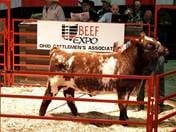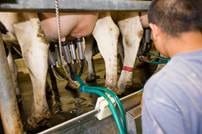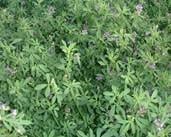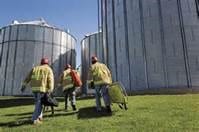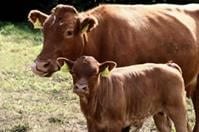Hello,
The big event has finally arrived. The Conservation Tillage Conference (CTC) will be this coming week at Ohio Northern University in Ada. If you haven’t registered but are still thinking about going, you can register the day of the event. On-site registration starts at 7:00 am on both Tuesday, March 4 and Wednesday, March 5. Go to ctc.osu.edu for a schedule and other conference information or read the attached news release. If you are planning to attend, I have an additional opportunity for you to become involved in a Nutrient Management Water Quality focus group. If you participate in this group, you will get a complimentary dinner Tuesday evening at the Inn (ONU) along with $25 cash.
Dr. Eric Toman, School of Environment and Natural Resources, The Ohio State University, is looking for a group of 8-12 crop farmers, livestock farmers who spread manure, or commercial applicators to find out your views on challenges, adoption, concerns, impact, and effectiveness that the upcoming new policies in the area of nutrient management practices will have on your operation. This is a discussion group to find out your experiences and opinions about current nutrient management practices, factors that influence your ability to adopt and maintain practices, and your expectations or thoughts about future practices policies. For more information, see the attached flyer. If you would like to participate in this focus group, please respond to this email by Monday at noon so I can let him know you are interested.
Other events going on in the county this coming week include Ag Council on Friday, March 7 at Henry’s Restaurant. Mark Light is the program speaker for this breakfast meeting which starts at 7:00 am. The annual Consignment Sale is being held at the Hardin County Fairgrounds on Saturday, March 8, starting at 9:00 am. Consignment deliveries are being accepted Wednesday (3/5), Thursday (3/6), and Friday (3/7) from 9:00 am-5:00 pm with none on sale day.
The Hardin County Cattle Producers have decided to open up their Beef Scholarship to more applicants. See the attached addendum for further information. Applications can be downloaded from hardin.osu.edu or obtained from any county FFA advisor or high school guidance counselor and are due March 20. OSU Extension Sheep Specialist Roger High has asked me to include information about the Cache Valley Virus, which is a virus that causes infertility, abortions and congenital abnormalities in sheep during lambing season. See the attached file for further details about the Cache Valley Virus. Also, I have included some articles that you might find interesting if you have additional reading time due to winter weather.
Mark
The 2014 Overholt Drainage School – March 10-14 – Fulton SWCD in Wauseon – Larry Brown
This year’s program includes three sessions: Agricultural subsurface drainage: System design and installation; Drainage water management: Controlled drainage system design and installation; and Water table management with subirrigation: System design, installation and management. The session on Subirrigation has not been taught since 2005. Dr. Bud Belcher (MSU Retired) will lead this session. For more information, go to http://corn.osu.edu/newsletters/2014/2014-5/the-2014-overholt-drainage-school-will-be-held-march-10-14-2014.
Ohio Beef Expo Kicks Off March 14
The Ohio Beef Expo, the premier event of Ohio’s beef industry, takes place March 14 – 16 at the Ohio Expo Center in Columbus. This year’s schedule once again includes breed sales, shows, educational seminars, trade show and a highly competitive junior show. Attendees will also be able to take part in a silent auction and social hour on Friday and Saturday. The trade show, kicking off the Expo at 8:30 a.m. on Friday, will run throughout the event and features more than 100 exhibitors from 15 states. A series of educational seminars will run throughout Friday, giving producers an opportunity to gain useful knowledge from industry experts about advancements and current trends, and will allow producers to improve their own operations in areas such as marketing and herd management. A complete list of seminars is available at www.ohiobeefexpo.com. To read more about the Ohio Beef Expo and other beef cattle articles, go to http://beef.osu.edu/beef/beefFeb2614.html.
Is It Too Early to Apply N to Wheat? – Ed Lentz, Laura Lindsey
Each year producers ask the question when is the best time to apply N to wheat? Also, is it ok to apply N on frozen ground? For any N application the question to ask is when does the crop need N. Wheat does not require large amounts of N until stem elongation (Feekes Growth Stage 6), which is the middle or the end of April depending on the location in state. Ohio research has shown no yield benefit from applications made prior to this time period. Soil organic matter or N applied at planting generally provides sufficient N for early growth until stem elongation. To continue reading this article, go to http://corn.osu.edu/newsletters/2014/2014-5/is-it-too-early-to-apply-n-to-wheat.
DHIA Results for Ohio – Maurice Eastridge
Hot off the press this week! See how Hardin County Dairies on test did compared to the statewide average. Compare the different dairy breeds for production in pounds of milk, fat, and protein. The only people who I have shared this with in Hardin County were the attendees at the Dairy Service Unit annual meeting this past week. Find out which dairies had the top productive cows for each of the breeds. See the attached file to look through this report.
2014 Farm Bill Meeting – How will it affect me, the farmer? – March 20, 2014 at 7:00 p.m. – Versailles Schools Cafetorium – Sam Custer
On February 4, 2014, the 2014 Farm Bill (named the Agriculture Act of 2014) cleared its final Congressional hurdle. The President signed the bill into law on February 7, 2014. It now goes to the United States Department of Agriculture for implementation. The commodity programs in Title I of the farm bill and the choices required all begin with the 2014 crop year. The final regulations will further determine program and decision parameters, as well as when farmers can begin to sign up. See the attached article from Darke County Extension for more information about this panel program.
Mark A. Badertscher
Agriculture and Natural Resources Educator
OSU Extension Hardin County
1021 W. Lima Street, Suite 103, Kenton, OH 43326
419-674-2297 Office

